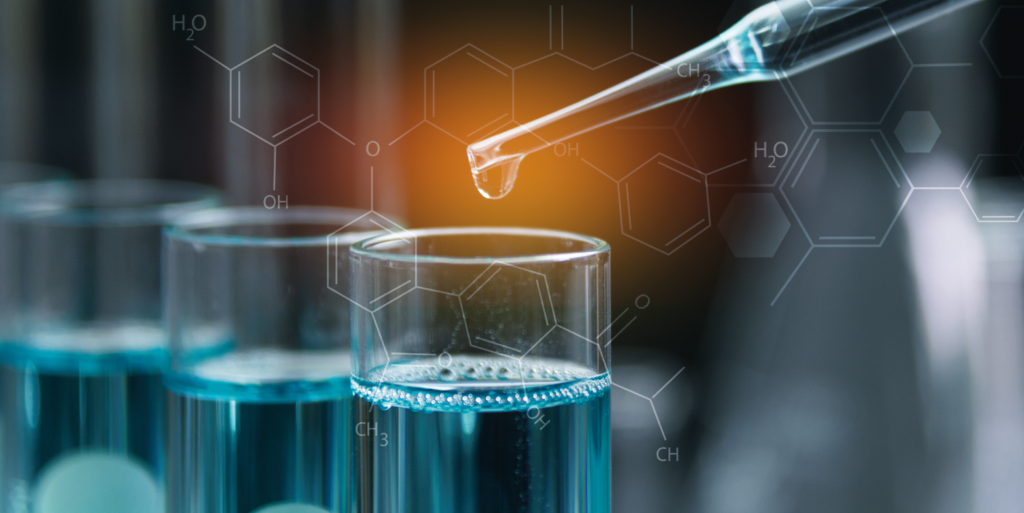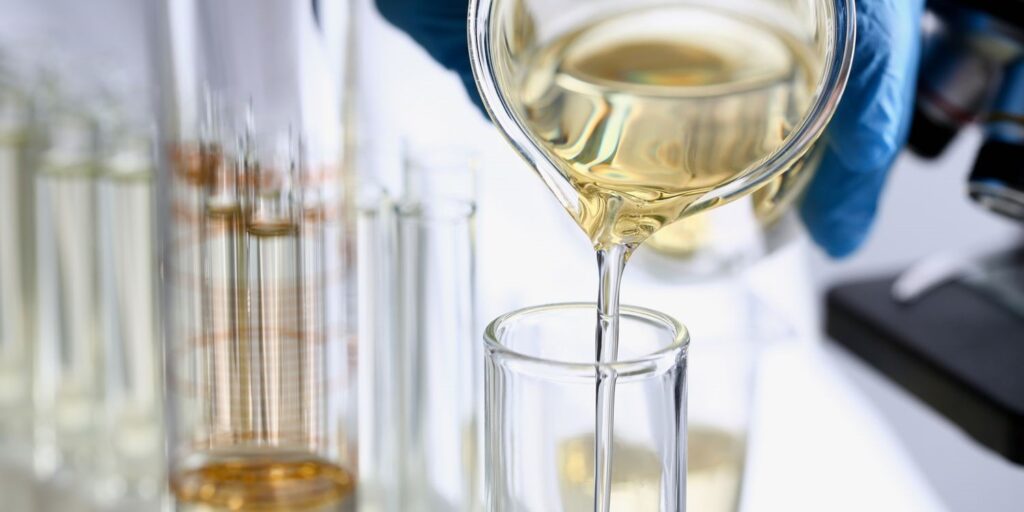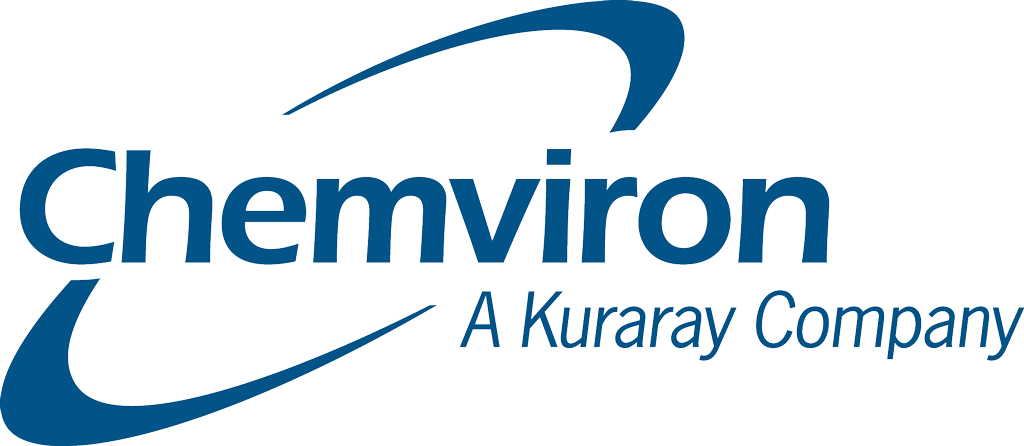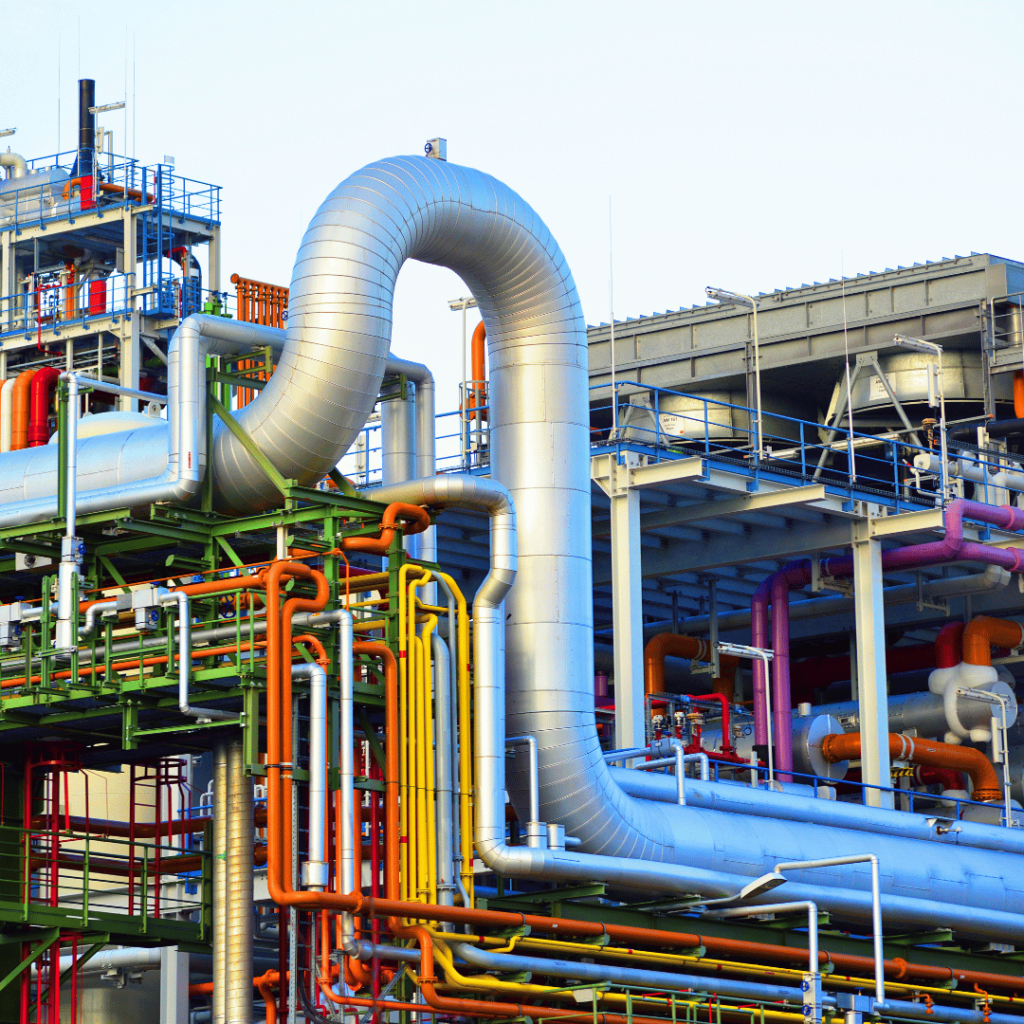During the manufacturing and processing of many liquid chemical products, fine chemicals, or intermediates, removing trace or undesirable impurities, colour, or odour is critical to ensure that these products meet the required quality and purity demands of the market.
Activated carbon is proven to be highly successful for the purification, decolourising, or deodorizing of many liquid chemical products because purification can improve downstream processing or produce a higher purity or higher value final product. Different grades and forms of activated carbon are available such as powder or granular, depending on the specific product to be treated or removed, the production process used, and the operating conditions.
The Chemviron Acticarbone ® range of European-produced wood-based activated carbons are particularly suited for decolourisation applications. Their excellent adsorption capacity, high purity and exceptional filterability are highly valued in such specialised applications.
However, the list of chemicals that can be decolourised or purified using activated carbon is immense. Some of these chemicals or applications are covered in more detail in the following sections.
Removal of Unwanted Byproducts or Colour with Activated Carbon
The processes involved in manufacturing liquid organic chemicals, solvents or chemical intermediates may generate unwanted organic byproducts or trace impurities that generate colour or colour-forming compounds. Activated carbon in powder or granular form may be used to remove a wide range of these impurities, such as specific organics, TOC, and constituents that can impact the product’s colour or quality.
In addition, the market value of commodity-grade synthetic organic solvents can be increased substantially by a simple purification with activated carbon to produce a higher purity specification solvent. The range of trace impurities that may be removed may include out-of-specification colour bodies, unacceptable odour-producing compounds or just product contamination such as benzene or sulphides.
Treatment of off-specification chemicals or solvents improves productivity and reduces the solvent impurities enabling their use in higher market value applications such as pharmaceuticals and electronics.
Some of the liquid organic chemicals and solvents that can be purified using activated carbon include the following:
| Aliphatic hydrocarbons | Glycols | Organic Acids – see below |
| Alcohols | Liquid Hydrocarbons | Perchloroethylene |
| Aromatic hydrocarbons | Liquid Natural Gas (LNG) | Plasticisers |
| Amines | Lubricating oils | Shellac |
| Chlorinated solvents | Melamine | Solvents |
| Diesel | Methyl fatty esters | Stearin |
| Di-Isooctyl phthalate | Methyl isobutyl ketone (MIBK) | Synthetic oils |
| Esters | Monomer | UV Stabilisers |
| Fluorocarbons | Nitroparaffins |
Organic Acid Purification with Activated Carbon
During the manufacturing and processing of some organic acids, using activated carbon is often vitally important to remove byproduct impurities, odour or colour to achieve the required purity standards. For such acidic chemical processes, higher-purity carbon grades, which have lower acid-soluble ash, are typically used in such environments.
Chemviron provides high-quality acid-washed granular activated carbons with low acid soluble iron and ash contents that are proven for purification in such applications which may be recycled by reactivation, for reuse.
Some examples of organic acids that activated carbon can purify include:
| Acetic Acid | Maleic Acid |
| Adipic Acid | Oxalic Acid |
| Benzoic Acid | Propionic Acid |
| Formic Acid | Succinic Acid |
| Fumaric Acid | Terephthalic Acid |
Liquid Inorganic Chemicals and Mineral Acids
Liquid inorganic chemicals also benefit from purification with activated carbon, particularly where there is undesirable colour or organic impurities present.
This may be generated as a byproduct of an industrial process where chlorinated organic compounds are being produced. In such cases, the acid may be contaminated by impurities such as TOC, chlorinated aromatics such as mono or dichlorobenzene and aliphatic compounds such as chloroform, tetrachloromethane, tetrachloroethylene. There is then the opportunity to upgrade these contaminated streams for further use in various manufacturing and synthetic chemical industry applications.
The purification process using active carbon requires products with low ash and low leaching of iron. Chemviron provides acid-washed granular activated carbons with low acid-soluble iron and ash contents proven in such applications.
Some examples of inorganic products that benefit from treatment with activated carbon include:
| Aluminum Chloride | Phosphorous | Sodium nitrite |
| Cadmium Cyanide | Silicones | Sodium tripolyphosphate (STPP) |
| Hydrochloric Acid | Soda ash (sodium carbonate) | Sulphuric Acid |
| Lithium | Soda ash (sodium carbonate) | Zinc acid chloride |
| Phosphoric Acid | Sodium chloride (brine solution) |
Condensate Treatment
Steam generation in process industries and power plants requires the water to meet good quality standards as the condensate is usually recycled back to the boilers. However, this steam condensate may be contaminated by organics such as leaking lubricants, hydraulic oils, or organic impurities from the production process, which if not removed can cause scaling in the boilers or turbines. Activated carbon is extremely efficient at such organic removal and is widely used to treat condensate and provide high-purity feed water with low TOC.
In addition, these systems require very low levels of silica to which high-pressure boilers are particularly sensitive. Chemviron provides high-purity and low-silica carbons for these applications.


Purification of Amines using Activated Carbon
Ethanolamines are widely used in scrubber systems to purify gas streams by absorbing acid gas constituents. These recirculating liquid scrubber streams may consist primarily of mono-, di- or tri-ethanolamine, methyl diethanolamine, or other amines.
For absorbing acid gas constituents such as CO2, H2S and COS, the amine stream picks up a wide range of other organics which eventually foul the scrubbing solvent. Some recirculating amine streams perform well for a certain period without difficulty but, in most cases, foaming, corrosion, loss of efficiency, and other problems appear that affect operational costs.
The presence of these degradation products in the amine may accelerate corrosion, require more reclaimer dumping and filter changes, and result in a need for higher quantities of amine make-up.
The loss of product quality or operating efficiency can be quite costly to the overall plant operation, the most cost-effective and simple remedy is usually done by restoring amine quality online without a service interruption. This can be achieved by adsorption of the dissolved organics from the amine solution onto activated carbon.
With extensive experience in these applications, please contact us for further information.
Activated Carbon, as a Catalyst or as a Catalyst Support
With its large surface area, purity, and relative hardness, activated carbon is an ideal carrier or support for catalytic metals. Activated carbons commonly act as catalyst carriers for precious metal or base metal salts which work as catalysts in the chemical industry.
In addition, activated carbons produced under specialised conditions can have enhanced properties over standard activated carbons and act as catalysts themselves. Some of the applications where activated carbons may be used as a catalyst include:
- Cyanuric Chloride – Activated carbon promotes the chlorination of hydrocyanic acid to cyanogen chloride and ultimately cyanuric chloride.
- Phosgene – Activated carbon is used both for the production and destruction of phosgene. During its production, carbon monoxide and chlorine are catalysed on activated carbon.
- Merox – Activated carbon is used in the Merox (Mercaptan Oxidation) catalytic chemical process for mercaptan removal in petroleum distillates

So How Can Chemviron Help You?
Suppose you have a liquid chemical that needs to be purified or decolourised to a certain standard. In that case, it is always helpful to understand basic process information so any details that you can provide will enable us to provide the optimum solution. Chemviron can assess the process with our experienced team to determine the suitability of carbon technology and its likely effectiveness for this application.
If required, a laboratory isotherm can be made to evaluate the level of impurity removal or colour reduction to meet specific absorbance targets on-site or via a pilot trial. The most effective carbon to be used may depend on the nature of the impurities or colour to be removed, the final treated requirement, and the overall treatment operation involved. If it is a batch operation, for example, a powder-activated carbon may be appropriate whereas if continuous, a granular activated carbon may be preferred. Our technical team can advise on the most appropriate way to proceed with your application.
For a new process operation, why not consider using a mobile carbon filter that is available for rental? These are activated carbon filters that can be used on-site as both a liquid purification vessel and then transported to and from the site, without the need for any on-site carbon exchange. Chemviron has a range of units of different sizes and capabilities including those for corrosive liquors or for some organic solvents that may need different gaskets etc.
In addition, depending on the process, the spent carbon can typically be recycled, by thermal reactivation, for reuse. If a mobile carbon filter was being used, the spent carbon may be easily returned in the mobile carbon filter to our reactivation centre, for processing.
If you need help with the choice of activated carbon, the potential for reactivation, the help of our mobile carbon filter service or just some further advice, please contact us – contact our technical team.

